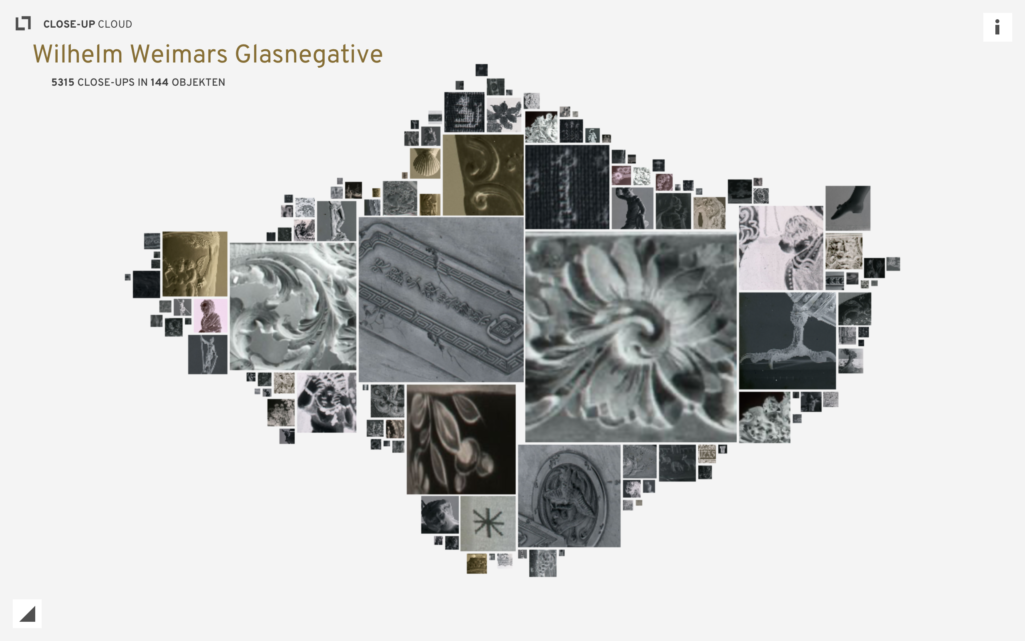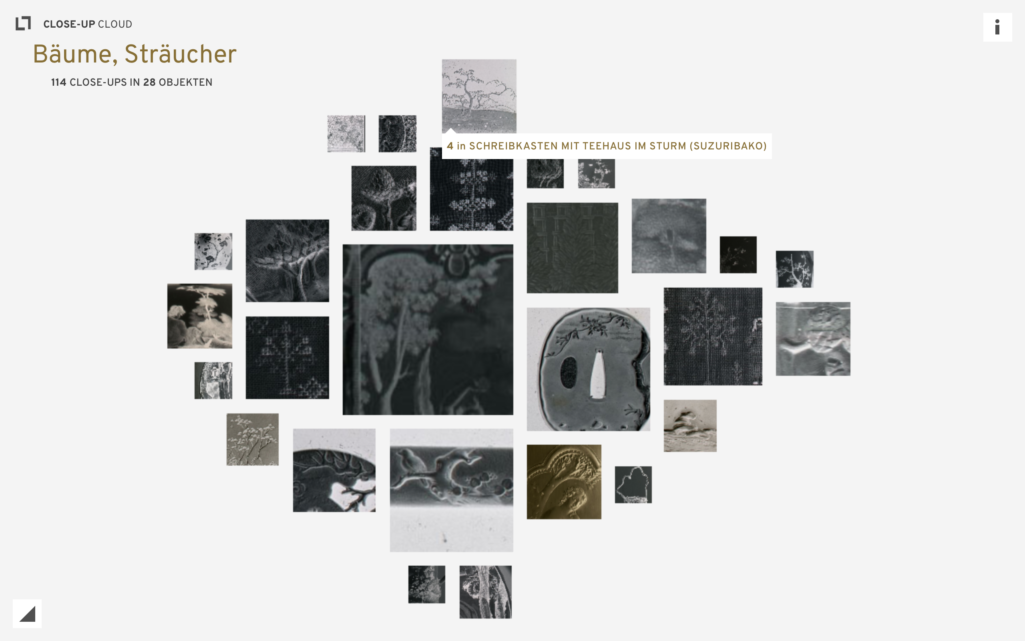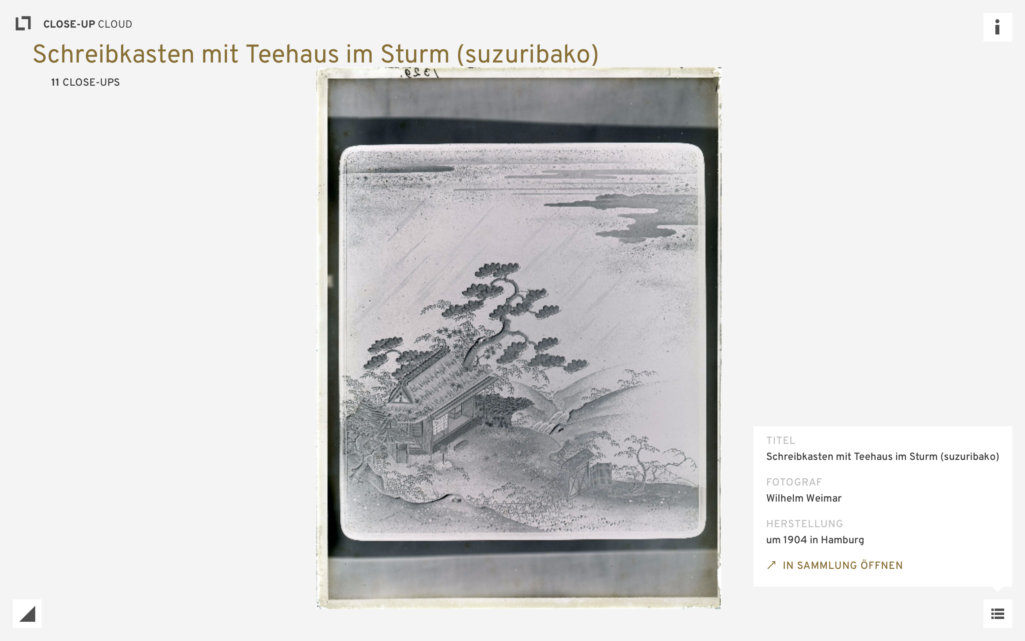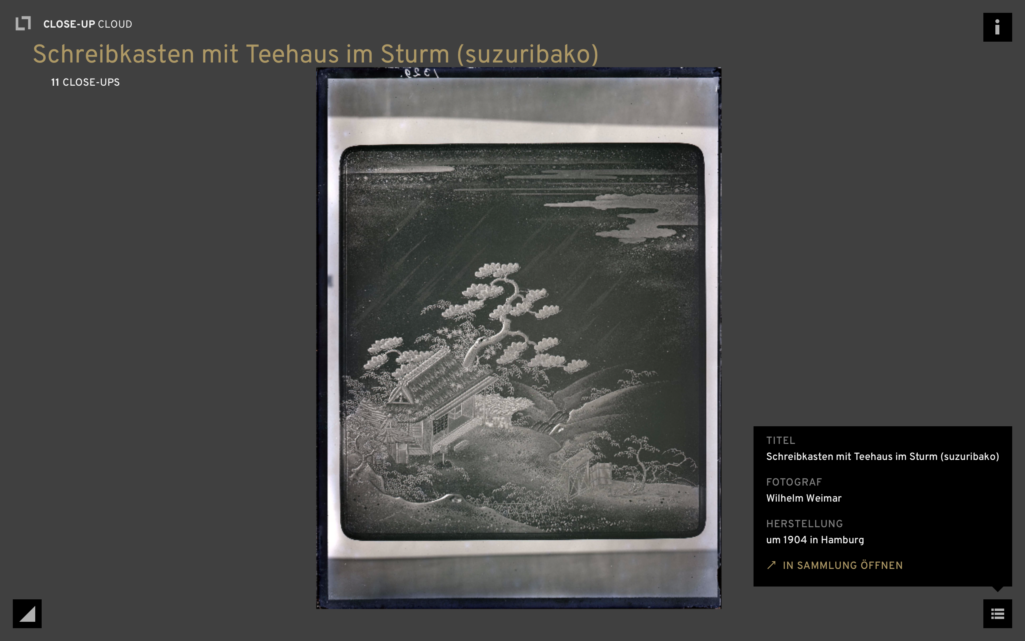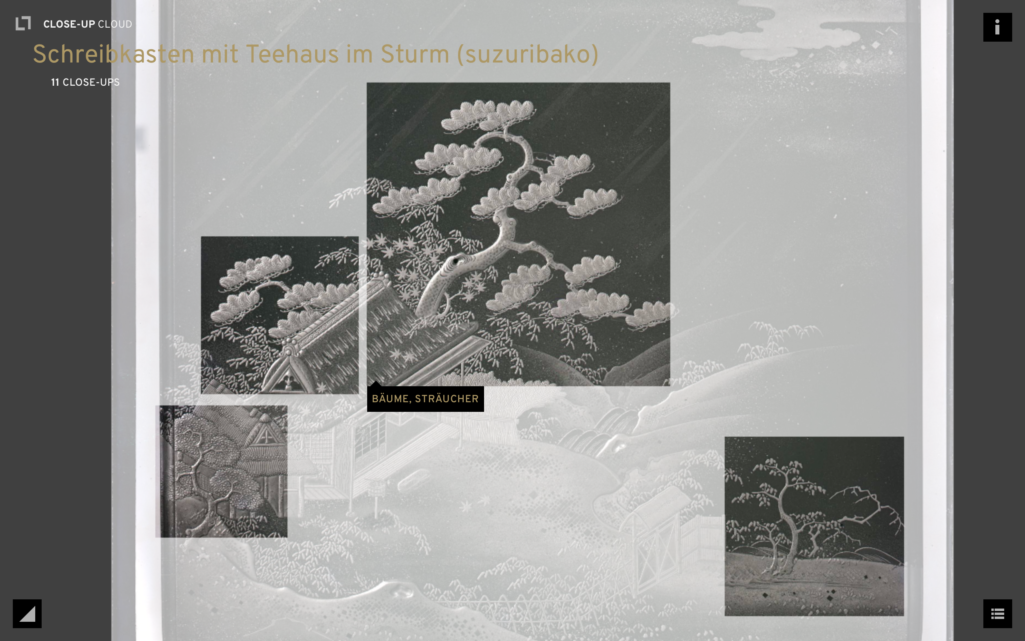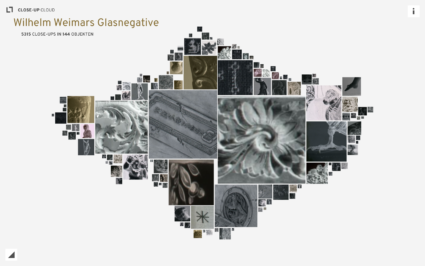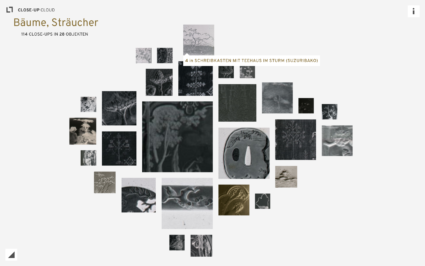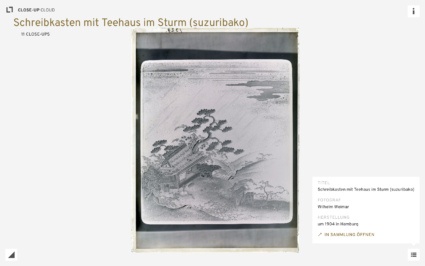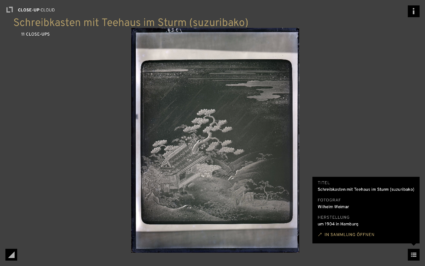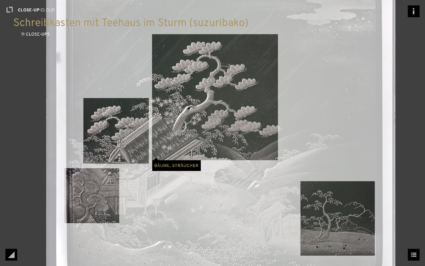The Close-Up Cloud introduces an approach towards visualization of collections that is challenging the understanding of overview and detail as something inherently opposed. We introduce a technique that clusters iconographic details of images in order to reveal visual patterns prevalent in a collection.
The Close-Up Cloud is designed to support the visual exploration of a collection of historical glass negatives. The close-up overview invites you to familiarize yourself with the collection and explore its richness in visual details. The sizes of the images represent the quantitative distribution of the respective iconographic details in the collection. The close-ups become visual navigation elements for exploring the collection. The visualization makes it possible to experience the glass negatives in a way that would not be possible with the physical objects. Inspired by a light table revealing the wealth of details of individual glass negatives, the Close-Up Cloud extends the access to an overview of all keywords assigned in the collection and invites viewers to engage in interactive exploration.
A collection of around 1700 glass negatives by early photographer and previous draughtsman Wilhelm Weimar (1857-1917) has been preserved at the Museum für Kunst und Gewerbe Hamburg (MKG). On negative plates measuring up to 18×24 cm, Weimar photographed over 17 years of art and craft objects from the rapidly growing collection. The range of motifs in these reproduction photographs stretches from massive chests to elegant porcelain. In addition, the negatives provide information on how the photographer staged objects according to size and material, and which technical aids he used. A selection of 144 negatives from the holdings made accessible to date is accessible in the visualization via keywords localized/located in the respective pictures.
Wilhelm Weimar’s glass negatives are part of the photography and new media collection at the MKG. They were made accessible within the framework of the interdisciplinary research programme PriMus – Doctorate at the Museum (cooperation between Leuphana University Lüneburg and six museums in the Hamburg region) from 2017 to 2019 and are published in the MKG Collection Online.
Close-Up Cloud was a student research project carried out at Fachhochschule Potsdam in cooperation with the Museum für Kunst und Gewerbe Hamburg funded by the Brandenburg Centre for Media Studies (ZeM).
Publications
Associated Publications
—
In Book of Abstracts of the Digital Humanities conference (DH) 2019: Complexities. Utrecht (The Netherlands),
2019
After two decades of steady increases in image resolution through technical advances in image sensors, we are now also witnessing a significant growth in comprehensively tagged image collections. Concurrently cultural institutions have been digitizing their collections, while cultural scholars have been investing considerable efforts into the annotation of images to denote iconographic details and historical context. Despite these developments, existing interfaces to access image collections do not harness the possibilities provided by rich visual details of high-resolution images and detailed tags associated with them.
A particularly promising development, however, is the growing research interest in visualization to support the analysis and exploration of cultural heritage data [Windhager et al., 2018]. In this context, art historians are experimenting with digital methods, in particular visualization [Bailey and Pregill, 2014], to explore their potential for expanding the scale and scope of art history [Drucker, 2013; Manovich, 2015]. In these experiments, digital methods tend to be equated with a distanced perspective on the phenomenon [Moretti, 2013] with the result that many visualizations provide high-level overviews that diminish the intricate and intriguing details of individual artifacts [Hochman and Manovich, 2013; Hristova, 2016].
With this research we present an approach towards visualization that is challenging the understanding of overview and detail as something inherently opposed. We introduce a technique that clusters iconographic details of images in order to reveal visual patterns prevalent in a collection.
—
6.2-6.13, in: International Journal for Digital Art History; No 5,
2020
This paper introduces a visualization technique designed to uncover iconographic patterns prevalent within a collection while at the same time allowing close viewing of these particular details. Challenging an institutionalized understanding of overview and detail as inherently opposed, the intention of this research is to develop a visualization method that accounts for the iconographic abundance of a collection and encourages its casual exploration. Expanding digitization efforts have led to a growing number of rich cultural heritage datasets that are successively being published online. At the same time scholars are exploring the potential of computational methods to expand the scale and scope of art history. In this context, data visualization is often equated with a distanced perspective diminishing the intricate and intriguing details of individual artifacts. In collaboration with a museum of applied and decorative arts, we have devised a novel interface concept for the exploration of image collections such as historical glass plate negatives. Inspired by photographic plates on a light table, the resulting Close-up Cloud translates the art historical method of close viewing into the digital by combining it with a dynamic representation of quantitative iconographic patterns across an entire image collection.

